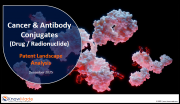
|
시장보고서
상품코드
1555006
세계의 이중 특이성 항체 약물 복합체 시장 : 임상시험, 약사 승인, 향후 시장 기회 전망(2029년)Global Bispecific Antibody Drug Conjugates Clinical Trials, Regulatory Approvals & Future Market Opportunity Outlook 2029 |
||||||
이중 특이성 항체 약물 복합체(BsADC)는 화학요법제의 강력한 세포독성과 이중 특이성 항체의 특이성을 겸비한 신규하고 흥미로운 표적암 치료제의 클래스입니다. 면역 이펙터 세포와의 동시 작용, 암 세포상의 2 개의 상이한 항원의 표적화, 또는 동일한 항원상의 중첩되지 않는 2 개의 영역의 표적화를 통해, 이러한 혁신적인 방법은 종래의 항체 약물 복합체(ADC)의 치료 영역과 효능을 개선하려고 하는 것입니다. 세계의 BsADC 산업은 아직 초기 단계에 있지만, 향후 수년간 더 많은 후보들이 임상시험을 거쳐 시판되게 되어 크게 성장할 것으로 예상됩니다.
이중 특이성 항체 약물 복합체를 종래의 단일특이적 항체 약물 복합체와 비교하면 많은 잠재적인 이점이 있습니다. 이중 특이성 항체 약물 복합체는 2개의 상이한 에피토프에 결합함으로써 종양을 보다 선택적으로 표적화할 수 있습니다. 이특이적 결합은 암세포에서 약물의 흡수와 방출을 촉진할 가능성이 있습니다. 표적 약물 투여 및 면역 활성화는 종양 항원과 결합하여 T 세포 및 NK 세포와 같은 면역 세포를 종양 미세환경으로 끌어들이는 특정 이중 특이성 항체 약물 접합체의 능력과 결합할 수 있습니다.
개발 중 이중 특이성 항체 약물 복합체의 안전성 및 예비 효능은 초기 임상 데이터에서 유망한 결과를 나타냅니다. 예를 들면, 고형암의 암세포주나 동물 모델에 있어서, BVX002(미공개 항원 쌍을 표적으로 한다)나 VBC103(TROP2와 Nectin-4를 표적으로 한다) 등의 후보는 유망한 항종양 활성 그리고 관리 가능한 독성 프로파일을 보여줍니다. 이중 특이성 항체 약물 복합체의 치료적 이점 및 잠재적인 단점을 다른 이용가능한 치료법과 비교하여 완전히 이해하기 위해, 다른 혁신적인 치료법과 마찬가지로, 추가 조사가 필요합니다.
제약회사는 상업적 관점에서 세계의 이중 특이성 항체 약물 복합체의 임상 개발에 큰 관심을 보이고 투자를 하고 있습니다. Amgen, Innovent Biologics, AstraZeneca와 같은 항체 약물 복합체 시장의 주요 기업은 이중 특이성 항체 약물 복합체 후보를 적극적으로 파이프라인에 추가하고 있습니다. 한편, 전문적인 생명 공학 기업은 독자적인 플랫폼을 사용하여 최첨단 이특이성 항체 약물 결합 치료를 개발하고 있습니다.
본 보고서는 세계의 이중 특이성 항체 약물 복합체 시장에 대해 조사했으며, 시장 개요와 함께 약물 동향, 임상시험 동향, 지역별 동향 및 시장 진출기업경쟁 구도 등을 제공합니다.
목차
제1장 이중 특이성 항체 약물 복합체의 구상과 개발의 계속
- 개요
- 이중 특이성 항체 약물 복합체와 기타 면역요법의 비교
제2장 이중 특이성 항체 약물 복합체의 필요성
제3장 이중 특이성 항체 약물 복합체 - 설계와 작용기전
- 이중 특이성 항체 약물 복합체의 일반 구조와 설계
- 작용 기작
제4장 세계의 이중 특이성 항체 약물 복합체의 임상시험 개요
- 기업별
- 국가별
- 적응증별
- 상별
- 타겟별
제5장 세계의 이중 특이성 항체 약물 복합체 시장 인사이트
- 현재의 시장 시나리오
- 장래 시장 기회
제6장 이중 특이성 항체 약물 복합체 시장 분석 : 지역별
- 중국
- 미국
- 유럽
- 한국
제7장 이중 특이성 항체 약물 복합체 : 적응증별 응용과 개발
- 유방암
- 소화기 암
- 폐암
- 비뇨기 암
- 부인과 암
제8장 이중 특이성 항체 약물 복합체의 임상시험에 관한 기업, 국가, 적응증, 상별 고찰
- 연구
- 전임상
- 제I상
- 제II상
- 제III상
제9장 이중 특이성 항체 약물 복합체의 개발에 사용되는 플랫폼 기술
제10장 경쟁 구도
- Alphamab Oncology
- Amgen
- AstraZeneca
- Beijing Biocytogen
- BiVictriX Therapeutics
- Corellia AI
- Debiopharm
- Doma Bio
- Genmab
- Innovent Biologics
- ProEn Therapeutics
Global Bispecific Antibody Drug Conjugates Clinical Trials, Regulatory Approvals & Future Market Opportunity Outlook 2029 Report:
- Report Answers Question On Why There Exist Need For Bispecific Antibody Drug Conjugates
- First Bispecific Antibody Drug Conjugate Commercial Approval Expected By 2029
- Insight On Bispecific Antibody Drug Conjugates In Clinical Trials : > 60 Drug Conjugates
- China Dominating Bispecific Antibody Drug Conjugates Clinical Trials: > 35 Drug Conjugates
- Majority Of Bispecific Antibody Drug Conjugates For Breast Cancer
- Bispecific Antibody Drug Conjugates Clinical Trials Insight By Company, Country, Indication & Phase
- Bispecific Antibody Drug Conjugates In Combination Therapy By Indication & Clinical Phase
- Key Companies Involved In Development Of Bispecific Antibody Drug Conjugates
Bispecific antibody drug conjugates (BsADCs) are a novel and exciting class of targeted cancer therapies that combine the potent cytotoxicity of chemotherapeutic drugs with the specificity of bispecific antibodies. Through simultaneous engagement of immune effector cells, targeting of two distinct antigens on cancer cells, or targeting two non-overlapping areas on the same antigen, these innovative modalities seek to improve the therapeutic window and efficacy of conventional antibody drug conjugates (ADCs). Although the global BsADC industry is still in its early stages, it is expected to grow significantly over the next several years as additional candidates undergo clinical studies and become commercially available.
Comparing bispecific antibody drug conjugates to traditional monospecific antibody drug conjugates, there are a number of potential benefits. Bispecific antibody drug conjugates can target tumors more selectively by binding two different epitopes, which may lessen off-target damage while preserving or enhancing efficiency. Bispecific binding has the potential to promote drug uptake and release in cancer cells. Targeted drug administration and immune activation can be combined with the ability of certain bispecific antibody drug conjugates to bind tumor antigen and attract immune cells such as T cells or NK cells to the tumor microenvironment.
The safety and preliminary efficacy of Bispecific antibody drug conjugates in development have showed encouraging outcomes in early clinical data. In cancer cell lines and animal models of solid tumors, for instance, candidates such as BVX002 (targeting an undisclosed pair of antigens) and VBC103 (targeting TROP2 and Nectin-4) have shown encouraging antitumor activity and manageable toxicity profiles. To fully comprehend the therapeutic advantages and potential drawbacks of Bispecific antibody drug conjugates in comparison to other available therapy choices, more research is necessary, as with any innovative therapeutic approach.
Pharmaceutical companies are showing a great deal of interest in and investment in the global bispecific antibody drug conjugates clinical development landscape from a commercial standpoint. Major players in the antibody drug conjugate market, like Amgen, Innovent Biologics, and AstraZeneca, are actively adding bispecific antibody drug conjugates candidates to their pipelines. Meanwhile, specialist biotechnology firms are using proprietary platforms to create cutting edge bispecific antibody drug conjugate treatments. Examples of these companies are Zymeworks, Doma Bio, and Beijing Biocytogen.
Bispecific antibody drug conjugates development is still primarily focused on oncology; candidates are now undergoing clinical trials to treat hematological and solid malignancies. The research community is becoming more interested in using bispecific antibody drug conjugates to treat inflammatory and autoimmune diseases, among other therapeutic areas. Future market development and diversification may be further fueled by this expansion into new indications.
The potential for better clinical outcomes when compared to traditional antibody drug conjugate or monoclonal antibodies, rising investments in research and development, and developments in antibody engineering and conjugation technologies are all expected to fuel the significant growth of the bispecific antibody drug conjugates segment in the upcoming years.
Nonetheless, a number of technological hurdles must be overcome before bispecific antibody drug conjugates can be developed, and companies and researchers are working relentlessly to uncover solutions. These include choosing appropriate linker chemistries and payloads, fine-tuning the drug-to-antibody ratio, and optimizing the stability and manufacturing of complicated bispecific antibody complexes. Furthermore, efforts are being made to create new bispecific formats and screening methods in order to determine the best antigen pairings and binding affinities for the greatest possible therapeutic impact.
Consequently, the bispecific antibody drug conjugates market is highly dependent on intellectual property considerations, as firms and researchers strive to safeguard their proprietary technologies, conjugation techniques, antibody forms, and development procedures. Due to their complexity, bispecific antibody drug conjugates frequently entail several layers of intellectual property, such as patents covering the payload medications, linker chemistries, specific antigen combinations, and bispecific antibody constructions. As the market grows, this complex IP landscape might result in partnerships and licensing deals, as shown by a number of recent agreements and partnerships made by Biocytogen around its exclusive RenLite(R) Common Light Chain Mouse Platform.
In the future, the clinical validation of this treatment in large-scale trials and practical applications will be crucial to the bispecific antibody drug conjugates market's success. The ability to address unmet medical needs in cases of difficult-to-treat cancers and other diseases, cost-effectiveness, and the demonstration of superior performance and safety profiles compared to current treatments are important aspects that will affect the expansion of the market.
In conclusion, bispecific antibody-drug conjugates (BsADCs), which combine the advantages of bispecific antibodies and ADCs, constitute a state-of-the-art strategy in targeted therapies. The global BsADC market is still in its early stage but it has a lot of potential for expansion and innovation. BsADCs have the ability to profoundly alter cancer treatment paradigms and delve into new therapeutic domains as clinical development advances and technological obstacles are resolved.
Table of Contents
1. Conception & Ongoing Development Of Bispecific Antibody Drug Conjugates
- 1.1 Overview
- 1.2 Comparison of Bispecific Antibody Drug Conjugates With Other Immunotherapies
2. Need For Bispecific Antibody Drug Conjugates
3. Bispecific Antibody Drug Conjugates - Design & Mechanism Of Action
- 3.1 General Structure & Design Of Bispecific Antibody Drug Conjugates
- 3.2 Mechanism Of Action
4. Global Bispecific Antibody Drug Conjugates Clinical Trials Overview
- 4.1 By Company
- 4.2 By Country
- 4.3 By Indication
- 4.4 By Phase
- 4.5 By Target
5. Global Bispecific Antibody Drug Conjugate Market Insight
- 5.1 Current Market Scenario
- 5.2 Future Market Opportunity
6. Bispecific Antibody Drug Conjugates Market Analysis by Region
- 6.1 China
- 6.2 US
- 6.3 Europe
- 6.4 South Korea
7. Bispecific Antibody Drug Conjugates - Application & Development By Indication
- 7.1 Breast Cancer
- 7.2 Gastrointestinal Cancer
- 7.3 Lung Cancer
- 7.4 Urologic Cancers
- 7.5 Gynecologic Cancers
8. Bispecific Antibody Drug Conjugates Clinical Trials Insight By Company, Country, Indication & Phase
- 8.1 Research
- 8.2 Preclinical
- 8.3 Phase I
- 8.4 Phase II
- 8.5 Phase III
9. Platforms Technologies Used to Develop Bispecific Antibody Drug Conjugates
- 9.1 ABL Bio - ADC Strategy
- 9.2 Alphamab Oncology - Proprietary ADC Platform
- 9.3 Biocytogen - RenLite mice
- 9.4 BiVictriX - Bi-Cygni Therapeutics
- 9.5 Debiopharm - Multilink
- 9.6 Debiopharm - AbYlink(TM)
- 9.7 Duality Biologics - Duality Novel Platforms
- 9.8 Enduring Biotech - PEGylated Bispecific ADC Technology
- 9.9 Innovent Biologics - Unnamed Proprietary ADC technology
- 9.10 Medilink - TMALIN technology platform
- 9.11 ProEn Therapeutics - ArtBody(TM) ADC technology
- 9.12 Sichuan Baili Pharmaceutical/SystImmune - HIRE-ADC
- 9.13 Zymeworks - Unnamed Technology
10. Competitive Landscape
- 10.1 Alphamab Oncology
- 10.2 Amgen
- 10.3 AstraZeneca
- 10.4 Beijing Biocytogen
- 10.5 BiVictriX Therapeutics
- 10.6 Corellia AI
- 10.7 Debiopharm
- 10.8 Doma Bio
- 10.9 Genmab
- 10.10 Innovent Biologics
- 10.11 ProEn Therapeutics






